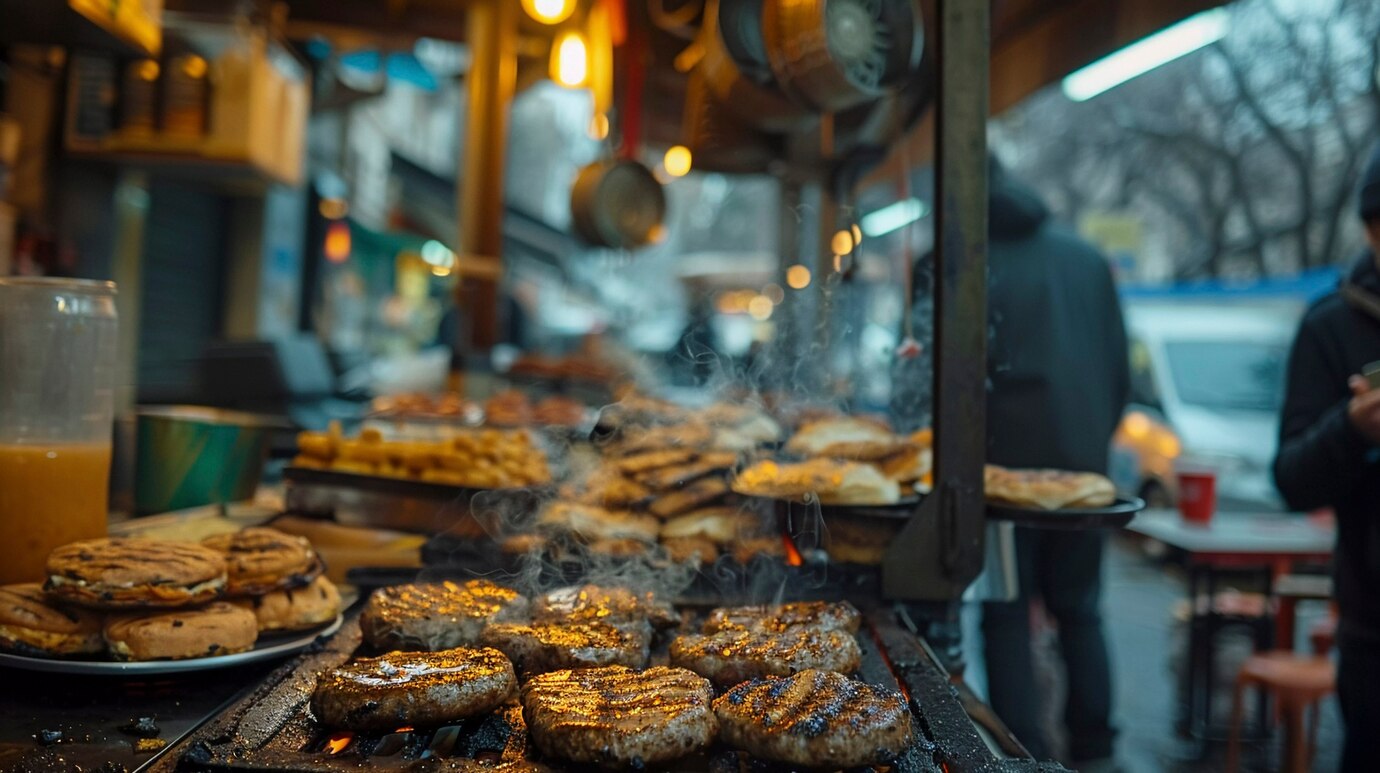
How to Cook Street Food Classics from Around the World
Street food is a window into the heart of a culture, offering bold flavours, vibrant spices, and traditional cooking techniques passed down through generations. Whether you’re craving Mexican tacos, Thai pad Thai, or Indian chaat, learning to cook street food classics at home allows you to experience authentic global flavours from your kitchen. More than just a quick meal, street food reflects a country’s history, social dynamics, and agricultural traditions. This guide will explore essential street food recipes, the core techniques behind them, and expert tips for mastering the art of street food cooking.
Core Concept: Understanding Street Food Culture
Street food is a reflection of a region’s culinary identity, often showcasing local ingredients and quick, flavourful preparations. While each country has its own specialities, most street foods share common characteristics:
- Quick & Convenient: Designed for on-the-go consumption, street foods are often easy to prepare and eat without utensils.
- Affordable & Accessible: Street food is meant to be budget-friendly, making use of fresh and readily available ingredients.
- Bold Flavours: The use of aromatic spices, marinades, and sauces elevates these dishes, making them deeply satisfying.
- Cultural Heritage: Many street foods have centuries-old roots, often influenced by migration, colonisation, and trade.
By understanding the essence of street food, you can replicate its authenticity at home while gaining insight into the food traditions of different cultures.
Step-by-Step Guide: Cooking Street Food Classics
Here’s how you can recreate some of the most beloved street food dishes from around the world:
1. Mexican Tacos al Pastor

Origin: Inspired by Lebanese shawarma brought to Mexico by immigrants, al pastor tacos use marinated pork cooked on a vertical spit.
Ingredients:
- 1 lb pork shoulder, thinly sliced
- 2 dried guajillo chilies
- 2 dried ancho chilies
- 1 cup pineapple juice
- 2 cloves garlic, minced
- 1 tsp cumin
- 1 tsp oregano
- Corn tortillas
- Fresh cilantro, diced onions, and lime wedges
Method:
- Soak dried chillies in hot water for 10 minutes, then blend with pineapple juice, garlic, cumin, and oregano to create a marinade.
- Coat the pork slices in the marinade and refrigerate for at least 4 hours (overnight for best results).
- Grill or pan-fry the pork until caramelised and slightly charred.
- Serve in warm corn tortillas with fresh cilantro, diced onions, and lime wedges.
2. Thai Pad Thai
Origin: A staple of Thai street vendors, pad Thai was popularised in the 1930s as a national dish to promote Thai identity.
Ingredients:
- 200g rice noodles
- 200g shrimp or tofu
- 2 eggs
- 3 tbsp tamarind paste
- 2 tbsp fish sauce (or soy sauce for vegetarian)
- 1 tbsp sugar
- ¼ cup crushed peanuts
- 1 cup bean sprouts
- Green onions and lime wedges
Method:
- Soak rice noodles in warm water until soft, then drain.
- Heat oil in a wok and sauté garlic, shrimp/tofu, and eggs.
- Add noodles and a sauce made from tamarind paste, fish sauce, and sugar.
- Stir-fry everything until well combined, then garnish with crushed peanuts, bean sprouts, and lime.
3. Indian Chaat (Pani Puri)
Origin: Chaat originated in the Indian subcontinent, where vendors create crispy, spicy, and tangy street snacks that tantalize the taste buds.
Ingredients:
- 20 semolina puris (store-bought or homemade)
- 2 boiled potatoes, mashed
- ½ cup boiled chickpeas
- ½ cup tamarind chutney
- 1 cup mint water (blended mint, green chilies, cumin, water, and salt)
Method:
- Mix mashed potatoes and chickpeas with salt, cumin, and chilli powder.
- Crack open each puri and fill it with the potato mixture.
- Pour tamarind chutney and mint water inside each puri just before eating.
- Serve immediately for a crisp and flavourful bite.
4. Japanese Takoyaki

Origin: A popular street food from Osaka, takoyaki consists of crispy octopus-filled balls topped with savoury sauces.
Ingredients:
- 100g cooked octopus, diced
- 1 cup takoyaki batter mix
- 2 tbsp green onions, chopped
- 1 tbsp pickled ginger
- Takoyaki sauce, mayonnaise, and bonito flakes
Method:
- Heat a takoyaki pan and pour in batter.
- Add diced octopus, green onions, and pickled ginger.
- Cook, flipping each ball until golden brown.
- Drizzle with takoyaki sauce and mayonnaise, then sprinkle with bonito flakes.
Pro Tips for Perfecting Street Food
- Use authentic ingredients: Sourcing traditional spices and sauces enhances the authenticity of your dishes.
- Cook with high heat: Many street foods are prepared over open flames or in hot woks for a signature smoky flavour.
- Balance textures and flavours: Crispy, spicy, sweet, and tangy elements work together to create memorable street food experiences.
- Prepare fresh: Street food is best enjoyed immediately after cooking, so serve it hot and fresh.
- Marination matters: Allow proteins like pork or tofu to marinate long enough to absorb flavours fully.
Important Considerations
- Hygiene & Safety: Maintain high hygiene standards and proper cooking temperatures to avoid contamination.
- Ingredient Substitutions: If certain ingredients aren’t available, find the closest substitutes while maintaining authentic flavours.
- Allergy Awareness: Some street foods contain allergens like peanuts or shellfish; be mindful of dietary restrictions.
Best Practices & Additional Insights
- Experiment with Fusion: Try blending elements from different cuisines for unique street food creations.
- Master the Techniques: Invest in tools like a cast-iron skillet (for tacos), a wok (for pad Thai), or a takoyaki pan to achieve the right textures.
- Learn from the Pros: Watch street food vendors in action (via travel shows or online videos) to understand their techniques.
- Fermentation and Pickling: Many street foods use pickled or fermented ingredients (kimchi in Korea, achar in India) to add depth to dishes.
FAQs
1. Can I make street food without specialised equipment?
Yes! While some dishes benefit from specific tools, many can be adapted to standard kitchen cookware.
2. How do I get the authentic taste of street food?
Use traditional seasonings, follow authentic recipes, and don’t be afraid to use bold flavours.
3. What are some vegetarian-friendly street foods?
Chaat, falafel, banh mi (with tofu), and vegetable samosas are excellent options.
4. How do I make crispy street food?
Use high-temperature frying, coat ingredients lightly in starch, and serve immediately for the best texture.
Street Flavour at Home

Cooking street food at home allows you to explore different cultures and enjoy incredible flavours without leaving your kitchen. Whether you’re craving something spicy, tangy, or savoury, mastering these global classics will bring the essence of street food to your dining table. More than just meals, these dishes connect us to the stories, traditions, and flavours of cultures worldwide. So grab your ingredients, turn up the heat, and enjoy the thrill of authentic street food cooking. Happy cooking!


